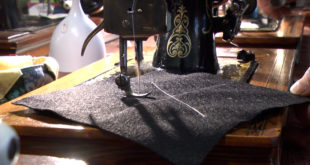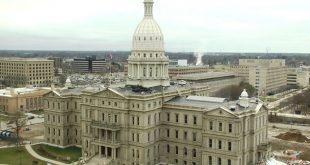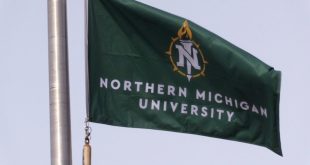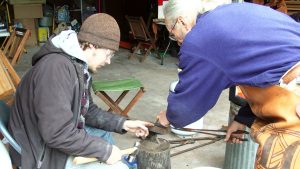 The Copper Country received its nickname during the mining boom of the mid 1800’s and into the 1900’s but carbon dating shows that mining in this area goes back as far as 7,000 years ago.
The Copper Country received its nickname during the mining boom of the mid 1800’s and into the 1900’s but carbon dating shows that mining in this area goes back as far as 7,000 years ago.
“We had the Native Americans here and they found this new material and it was just in this area of the upper Great Lakes—Michigan, Wisconsin, Minnesota, Ontario, Manitoba,” said coppersmith Larry Furo, who shared his expertise with the group in Misery Bay where they heated raw copper and hammered it into tools and utensils.
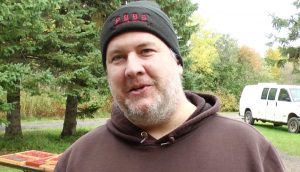 “Awls, knives, spears, fishing gaffs, a lot of decorative items. You name it, they were making it,” said Paul Schanen, an author on prehistoric copper mining who also guided the activity. “There’s some people that sat down here today and with direction from myself and some other experienced smiths, they made some pieces that turned out absolutely fantastic. Better than my first pieces did for sure, but when you’ve got the benefit of having a teacher there helping you along, which the natives would have too, the learning process is a lot smoother that way, versus trying to figure it out on your
“Awls, knives, spears, fishing gaffs, a lot of decorative items. You name it, they were making it,” said Paul Schanen, an author on prehistoric copper mining who also guided the activity. “There’s some people that sat down here today and with direction from myself and some other experienced smiths, they made some pieces that turned out absolutely fantastic. Better than my first pieces did for sure, but when you’ve got the benefit of having a teacher there helping you along, which the natives would have too, the learning process is a lot smoother that way, versus trying to figure it out on your 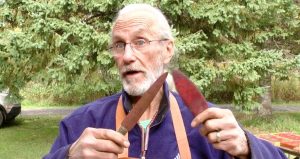 own,” Schanen said.
own,” Schanen said.
In this modern day replication, the group had the convenience of a propane forge, but in prehistoric days, the necessary heat was created using a good old camp fire. “They were using fire. The reason we use the forge today is because (it takes a) short amount of time,” Furo said.
It’s believed by many that metalworking started with copper, originating in the Keweenaw Peninsula before spreading to other parts of the world, and eventually evolving into modern day methods that we use today. Furo said, “We still use copper. We coat pots and pans and sometimes we get pure copper pots and things like that, our computers and iPhones and all that now. Copper is one of the most recycled materials there is in the world.”
More information on ancient copper working can be found on the Facebook page: Old Copper Complex and Ancient Waterways. https://www.facebook.com/
 Keweenaw Report Your Source for Local News and Sports
Keweenaw Report Your Source for Local News and Sports



